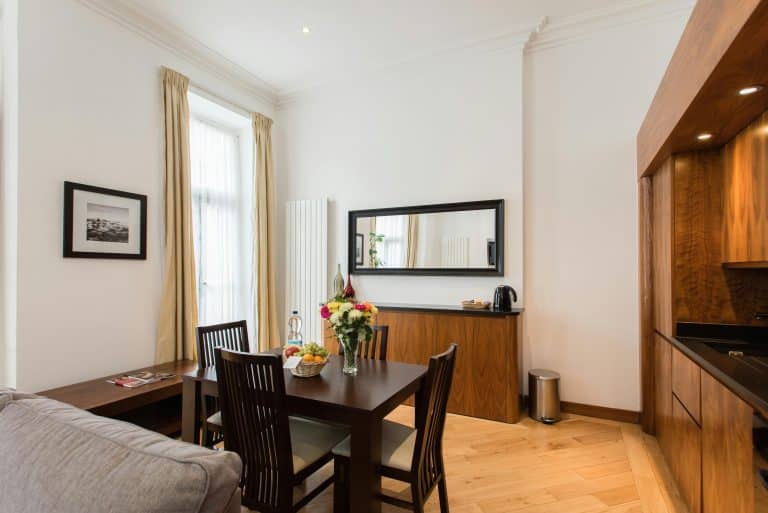Most people think about natural light in terms of brightness – whether a room feels light or dark. But the psychological impact of daylight goes much deeper than simple visibility. The way light enters and moves through our living spaces can directly influence our mood, energy levels, sleep patterns, and overall mental wellbeing in ways that many homeowners never consider.
How Light Affects Your Brain Chemistry
Natural light triggers a complex cascade of hormonal responses in the human body. When sunlight enters through our eyes, it signals the brain to suppress melatonin production and boost cortisol levels – essentially telling our bodies it’s time to be alert and active. This process happens automatically, but the quality and quantity of light makes a massive difference to how effectively it works.
Rooms that receive consistent, balanced natural light throughout the day help maintain healthy circadian rhythms. People living in well-lit spaces report better sleep quality, higher energy levels during the day, and more stable moods. The problem is that many homes weren’t designed with this biological need in mind.
The Seasonal Affective Connection
Seasonal Affective Disorder represents the extreme end of how light affects mental health, but even people without clinical SAD experience mood changes related to light exposure. During shorter winter days, reduced natural light can trigger feelings of lethargy, irritability, and mild depression in otherwise healthy individuals.
The solution isn’t always about adding more windows. Sometimes it’s about bringing light into spaces more strategically. Skylights from Access Panels Direct offer one way to introduce overhead natural light, though homeowners should research various suppliers and installation options in their area to find the best fit for their specific needs and budget.
Why Direction and Quality Matter
Not all natural light creates the same psychological benefits. North-facing windows provide consistent, even light that’s excellent for workspaces but may feel cold in living areas. South-facing exposure offers warmth and brightness but can create glare issues. East and west windows provide dynamic light that changes dramatically throughout the day.
The key is understanding how different light qualities affect your daily routines. Morning light from eastern exposures helps with natural wake-up cycles. Evening light from the west can feel cozy but may interfere with sleep preparation if it’s too intense. Room placement and light source planning become psychological tools, not just architectural decisions.
The Productivity Factor
Studies consistently show that people working in naturally lit environments demonstrate higher productivity, better concentration, and reduced eye strain compared to those relying primarily on artificial lighting. This isn’t just about office buildings – home workspaces, study areas, and even kitchens benefit from thoughtful natural light design.
The challenge is that many homes have spaces where traditional windows aren’t practical or sufficient. Interior rooms, basement areas, and spaces with structural limitations often depend entirely on electric lighting during daylight hours. This creates an artificial environment that can subtly drain energy and focus over time.
Creating Light Zones for Different Activities
Smart daylighting design considers how different activities require different types of natural light. Reading areas benefit from steady, diffused light that doesn’t create shadows on pages. Creative workspaces often work better with dynamic light that changes throughout the day. Relaxation spaces might need softer, warmer light that promotes calm.
The psychology here is about matching light conditions to intended use. Bright, cool morning light supports active tasks and decision-making. Warm afternoon light creates a more relaxed atmosphere suitable for casual activities. Evening light should gradually decrease to support natural sleep preparation.
Common Lighting Problems and Their Psychological Impact
Many homes suffer from what lighting designers call “cave syndrome” – spaces that feel disconnected from the natural world due to poor daylighting. Rooms that rely heavily on artificial light during daytime hours can create a subtle sense of confinement or depression, even when people can’t identify exactly why a space feels uncomfortable.
Glare represents another psychological challenge. Harsh, uncontrolled natural light can create stress and visual discomfort, making people avoid otherwise pleasant spaces. The goal isn’t maximum brightness but balanced, comfortable light that supports the room’s intended purpose.
Small Changes That Make Big Differences
Improving natural light doesn’t always require major renovation. Sometimes simple adjustments create significant psychological benefits. Light-colored walls and ceilings reflect and distribute daylight more effectively. Strategic mirror placement can redirect light into darker corners. Removing heavy window treatments allows more light penetration while still maintaining privacy.
The psychological impact of these changes often surprises homeowners. Rooms that previously felt cramped or uninviting can become favorite gathering spaces with relatively minor lighting improvements.
Planning for Year-Round Wellbeing
Effective daylighting design considers seasonal changes and how they affect daily life. Summer light requires different management than winter illumination. Spaces need flexibility to accommodate the dramatic differences in daylight availability throughout the year.
Natural light isn’t just about making rooms brighter – it’s about creating environments that support human psychological needs. Understanding this connection helps homeowners make lighting decisions that improve their daily quality of life in measurable ways. The investment in proper daylighting pays dividends in mood, productivity, and overall wellbeing that extend far beyond simple aesthetics.













